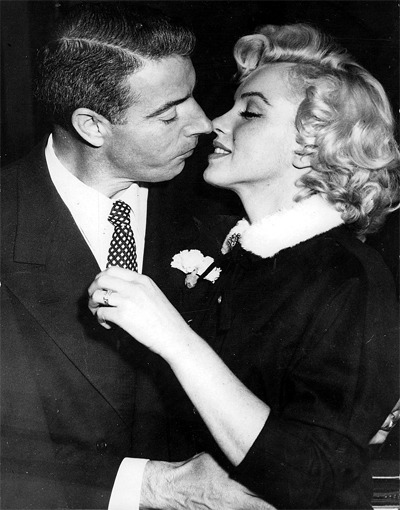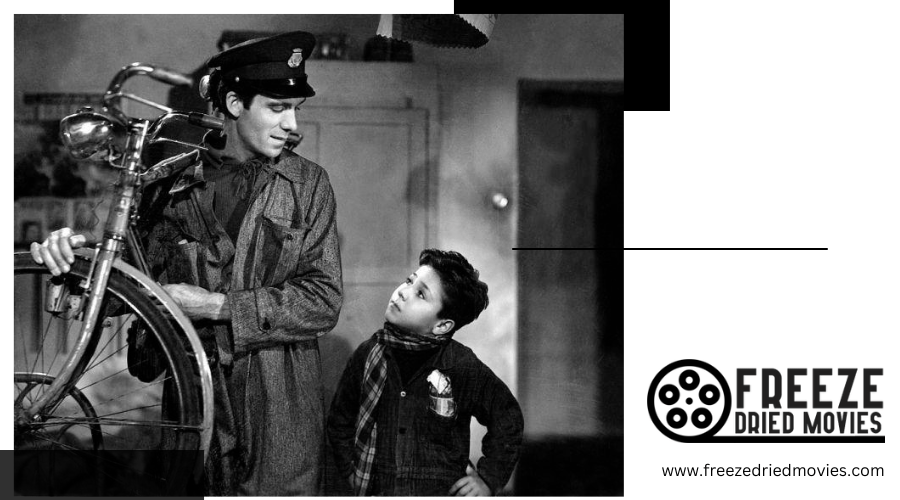Marilyn Monroe’s Final Years: The Mystery and Legacy

Marilyn Monroe's final years reveal a stark contrast between her glamorous public image and private struggles. You'll find her battling addiction, mental health challenges, and Hollywood's harsh treatment during the troubled production of "Something's Got to Give." Her complicated relationships with the Kennedy brothers and a disturbing incident at Cal-Neva Lodge added to her downward spiral. The truth behind this period differs dramatically from decades of sensationalized stories, offering surprising revelations about this iconic star's last chapter.
The Unfinished Film: "Something's Got to Give"
Although "Something's Got to Give" had all the makings of a successful film, it became one of Hollywood's most notorious unfinished projects and a symbol of Marilyn Monroe's final struggles.
Fox's decision to halt production dealt a devastating blow to Monroe's already declining career and wellbeing. The challenges during filming offer illuminating perspectives into her fragile state of mind, as corroborated by actress Cyd Charisse's observations from the set. What you mightn't know is that this lost opportunity could have potentially reversed Monroe's box office fortunes. Instead, the unfinished film became a haunting reminder of what might've been.
The project's demise, coupled with Fox's refusal to let Monroe complete it, contributed considerably to her personal turmoil during her final months. Like Joan Crawford's experience being labeled as Box Office Poison, Monroe faced similar career challenges that demanded a strategic reinvention of her public image.
Behind the Glamour: Personal Struggles and Addictions
While Marilyn Monroe's public image sparkled with glamour, her private life during her final years spiraled into a maze of personal demons and dependencies. You wouldn't have known from her dazzling smile that she was battling an increasing reliance on alcohol and prescription medication, which fueled her erratic behavior and rapidly declining health.
Her once-brilliant movie career took a devastating downturn as she struggled to balance her personal troubles with mounting professional challenges. The trauma of her involuntary stay at Payne Whitney psychiatric hospital in 1961, coupled with a heartbreaking split from Joe DiMaggio, only intensified her downward spiral. Her distressing weekend at Frank Sinatra's Cal-Neva lodge served as a stark reminder of how far the iconic star had fallen from her Hollywood heights. Despite these struggles, she maintained her intellectual pursuits, finding solace in her extensive collection of literature and philosophy books.
The Kennedy Connection: Separating Fact From Fiction
Few Hollywood legends have sparked more intrigue and speculation than Marilyn Monroe's alleged connections to the Kennedy family. Recent pioneering research has finally uncovered the truth about Monroe's relationships with John F. Kennedy and Bobby Kennedy, putting to rest decades of rumors and conjecture.
Through meticulous examination of personal records and exclusive interviews, you'll uncover:
- The exact date of Monroe's first meeting with JFK
- Previously unseen documentation of her movements and encounters
- Eyewitness accounts that challenge popular misconceptions
- Evidence that debunks theories about ongoing affairs
- A definitive timeline of her interactions with both Kennedy brothers
This exhaustive investigation separates facts from myths, providing you with the most accurate account of Monroe's Kennedy connections. You'll find that the truth behind this infamous chapter in Hollywood history differs drastically from the sensationalized stories that have persisted for over 60 years.
Unlike many stars of her era who were bound by exclusive talent contracts, Monroe managed to break free from the traditional studio system's rigid control of actors' personal and professional lives.
A Career in Decline: Hollywood's Treatment of an Icon
The final chapter of Marilyn Monroe's career reveals Hollywood's harsh treatment of one of its brightest stars. In her final years, you'll find a stark contrast between her iconic status and the industry's growing impatience with her personal struggles. Her movie career spiraled downward as she battled weight gain, drug use, and mental health issues, making it increasingly difficult to maintain her on-screen presence.
The troubled production of "Something's Got to Give" marked a particularly dark period, with the film ultimately being abandoned. While "Some Like It Hot" proved to be her last major success, even that film faced obstacles due to the restrictive Hays Code. Despite receiving mixed reviews and disappointing box office returns for films like "Let's Make Love," Monroe's enduring legacy transcends these career setbacks, cementing her place in Hollywood history.
The Cal-Neva Lodge Incident: A Weekend of Horror
One fateful weekend in 1962 at Frank Sinatra's Cal-Neva Lodge would forever change the course of Marilyn Monroe's life. She found herself held captive in a nightmare of exploitation and abuse that would haunt her final days.
Key elements of this disturbing incident include:
- Forced confinement by individuals allegedly connected to the Mafia
- Excessive exposure to drugs and alcohol against her will
- Growing concerns about her complicated relationships with the Kennedys
- A devastating mental breakdown that followed the ordeal
- Multiple eyewitness accounts later uncovered by biographers
What transpired at Cal-Neva Lodge remains partially shrouded in mystery, but the weekend's events clearly contributed to Monroe's downward spiral. Frank Sinatra's involvement and the presence of other powerful figures have fueled decades of speculation about the true nature of this traumatic experience.
Joe DiMaggio: The Rekindled Romance

Amidst Monroe's darkest days, Joe DiMaggio emerged as a steadfast protector and potential second chance at love. Their relationship, which had ended in divorce years earlier, found new life as DiMaggio worked tirelessly to support Monroe through her personal struggles, even attempting to secure her release from a psychiatric facility.
Their summer 1962 trip to Japan was particularly significant, as it hinted at a possible reconciliation between the former spouses. While their renewed romance remained largely private, DiMaggio's devotion to Monroe extended far beyond her lifetime. After her sudden death, he took charge of her funeral arrangements and demonstrated his enduring love by ensuring fresh roses were placed at her crypt daily for two decades. Their final years together remain one of Hollywood's most poignant love stories.
The Payne Whitney Psychiatric Hospital Experience
While DiMaggio proved to be Monroe's steadfast protector, perhaps his most significant act of devotion came during her traumatic experience at the Payne Whitney Psychiatric Clinic. After being tricked into involuntary confinement, Monroe endured a horrifying ordeal that would shape her final years.
Key aspects of Monroe's Payne-Whitney nightmare included:
- Being stripped of her clothes and placed in a padded cell
- Treated cruelly by staff who showed no regard for her dignity
- Ex-husband Joe DiMaggio's intervention after three days to secure her release
- The incident exposing the darker side of celebrity exploitation in psychiatric care
- Her developing lasting trauma and distrust of the medical establishment
This harrowing experience marked a turning point in Monroe's life, leading to increased reliance on medication and deepening her skepticism toward medical professionals who claimed to want to help her.
Final Days: A Timeline of Events

As Marilyn Monroe's life drew to a tragic close in August 1962, the events leading to her death would become one of Hollywood's most enduring mysteries. You'll find the final chapter of Monroe's life marked by professional setbacks and personal struggles. After her dismissal from "Something's Got to Give" and her controversial performance at President Kennedy's birthday celebration, Marilyn's last days were filled with uncertainty.
The details surrounding her death remain puzzling. On August 5, her housekeeper uncovered Monroe's lifeless body, but didn't immediately alert authorities. The delay in emergency response and conflicting witness accounts have fueled decades of speculation. While the coroner ruled her death a "probable suicide" from barbiturate overdose, you'll find that many aspects of that fateful night still spark debate among historians and fans alike.
The Truth About Her Death: New Evidence Emerges
Recent revelations have rewritten the narrative of Marilyn Monroe's death. After years of speculation, new evidence has come to light through extensive research and previously unseen records. The investigation offers a definitive account that contradicts long-held theories about Monroe's final moments.
Key findings from the investigation include:
- Medical records proving her death was an accidental overdose
- Documentation disproving alleged affairs with the Kennedy brothers
- Eyewitness accounts that shed new light on her final days
- Personal records that reveal Marilyn's state of mind
- Evidence that definitively rules out murder theories
These facts, uncovered through painstaking investigation, finally provide clarity about the circumstances surrounding Monroe's death. The evidence presents a clear image that puts to rest decades of conspiracy theories and speculation about the iconic star's tragic end.
Legacy and Impact: Six Decades Later
More than six decades after her untimeful death, Marilyn Monroe's cultural influence continues to shape Hollywood and popular culture. Her legacy extends far beyond her tragic end, with her comedic talents receiving renewed recognition, particularly in classics like "Some Like It Hot." You'll find her iconic status hasn't diminished - if anything, it's grown stronger with time.
The public fascination with Monroe remains intense, focusing not just on her achievements but also on the mysterious circumstances of her death. This enduring interest is evident in new projects like Netflix's "Blonde," which proves her story still enthralls audiences.
While some of her contemporaries, like Jayne Mansfield, remain underappreciated, Monroe's impact on Hollywood persists, cementing her place as one of entertainment's most enduring figures.




